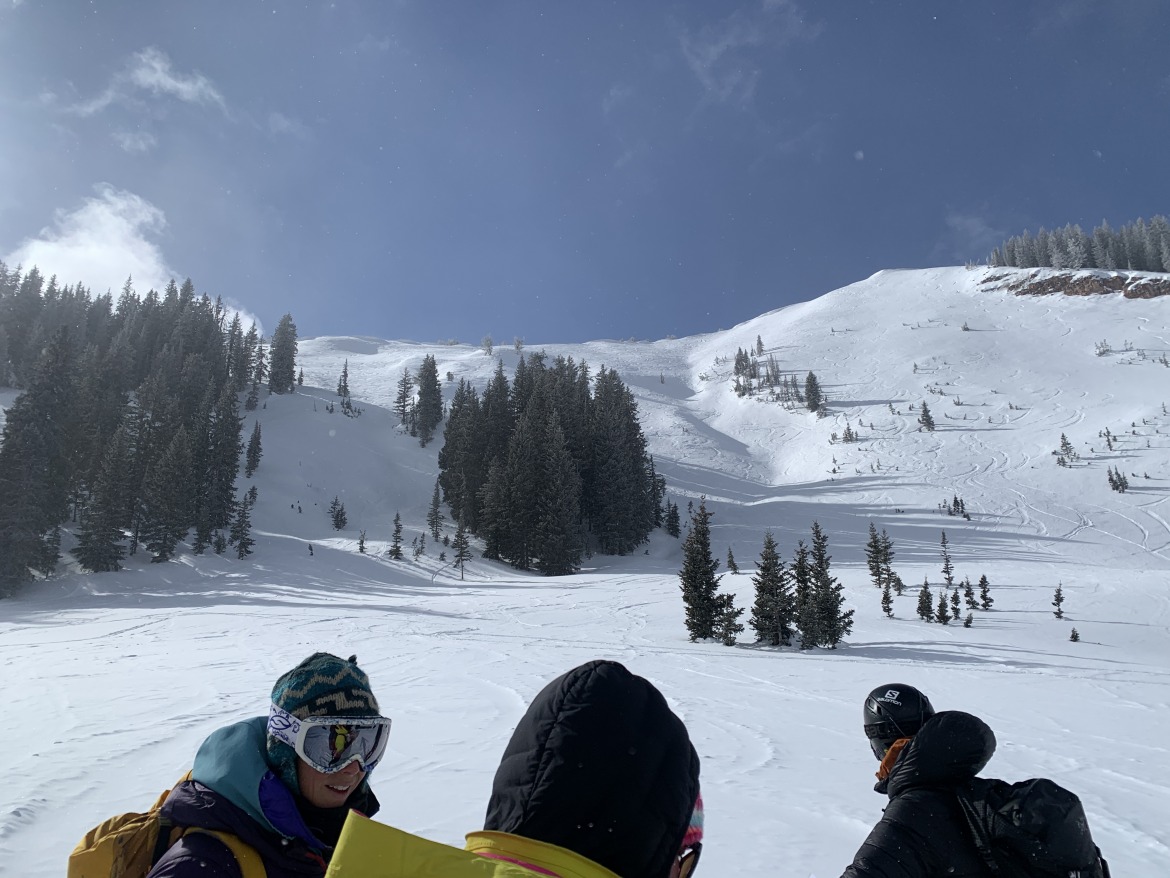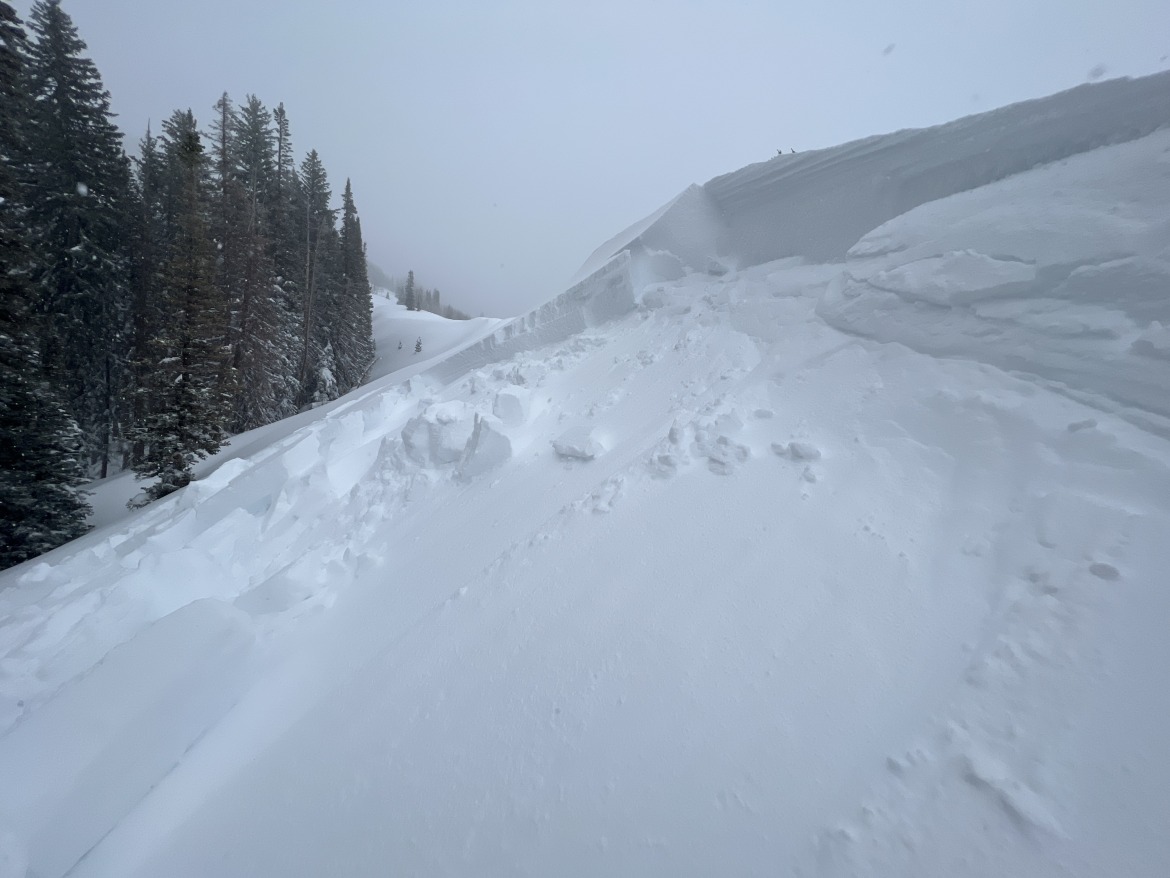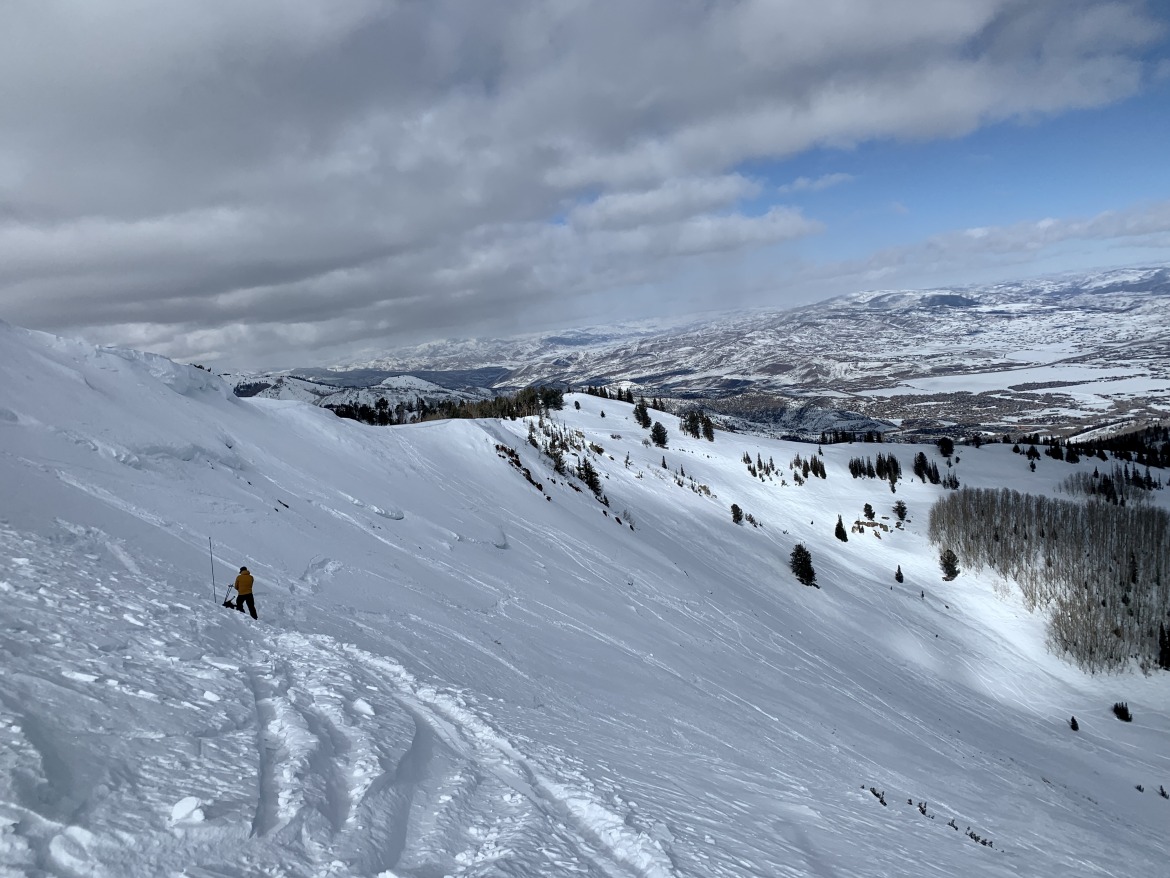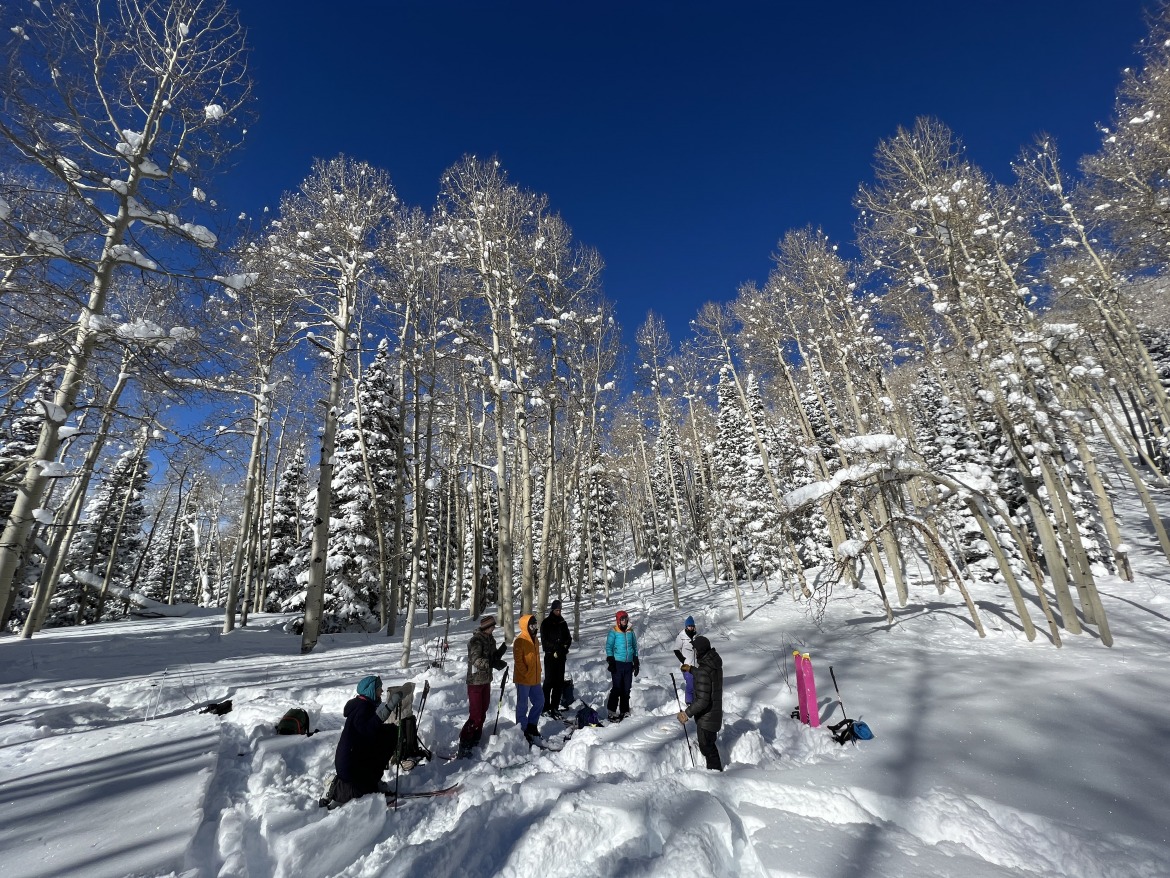
An introductory avalanche class requires students to be somewhat nimble in the backcountry. Think about ways to prepare before your introductory class; this includes practicing basic skills like applying and ripping skins. Photo: Will McKay.
Make the most of the time and resources you invest in avalanche education. Hone your basic backcountry skiing skills and fitness level, and prep your brain for the information download before taking that introductory avalanche class.
Here’s the scenario: You’ve just moved to a state with more snowfall and elevation gain than that little midwestern town you grew up in, and you’ve decided you’re going to become a backcountry skier. You join one of the state-wide backcountry skiing groups on Facebook and see everybody searching for partners, mentioning they have taken a level one avalanche course and will explicitly ski with people with similar training. Tick that box and you’re good to go, right?
If this sounds familiar, it’s because this networking dynamic is extremely common. And I’m not poking fun at you flatland midwesterners; I had a similar experience.
I grew up in Iowa and moved to Colorado for university and, in the following months, did what I outlined above. I had skied since I was around four, venturing out to Steamboat Springs, CO, every year over winter break and then returning to ski the 300′ ravine, Ski Snowstar, which was a thirty-minute drive across the Mississippi in Illinois. But I had never toured.
With my newly planted feet in the Rockies, I dove in head-first and at high velocity.
Nowadays, I work year-round as a mountain guide and am based around Salt Lake City, UT. During the winter months, I work full-time in the Wasatch ski guiding and teaching avalanche courses. Having gone from zero touring experience to my current role as a guide, I can look back on my journey and recognize things I wish I had done better and/or differently. And one of those things is holding off on taking that first avalanche course right away, at least.

Coming prepared with some basic backcountry travel skills and solid fitness to a level 1 avalanche course may set users up for better information retention and independence. Learning how to avoid avalanches should be your primary focus during an intro avalanche class. Photo: Will McKay.
Avalanche EDU in the United States
Let’s clarify the path for avalanche education in the US. Today, recreational skiers can take two main avalanche courses, REC 1 and REC 2, which follow the curriculum established by the American Avalanche Association (A3). Between those two offerings is an avalanche rescue course, optional if you’re only taking a REC 1 but required as a prerequisite if you want to take a REC 2.
Notice how I don’t call them an AIARE 1 or AIARE 2?
Similar to tissue and Kleenex, one is an item, and one is a branded version of that item. In many states, folks think an avalanche course is synonymous with an AIARE course when AIARE is simply a company that teaches approved A3 curriculum courses. Within the US, it’s almost a point of pride to stand behind which avalanche course provider is most popular in your state, professing how much more superior they are to the others. For Colorado, Washington, New Mexico, California, Oregon, all the East Coast, and Idaho, AIARE dominates the leaderboard. In Utah, Wyoming, and Montana, the American Avalanche Institute (AAI) is the name that pops up the most. Southern Colorado is the stronghold of the Silverton Avalanche School (SAS), the oldest avalanche school in the US.
None of this claims the superiority of one school or curriculum over the other; it’s simply to help better understand the education landscape.
What’s Covered in a Rec 1 Avalanche Course?
There is a ton of stuff covered in the first recreational avalanche courses. I mean a lot, especially for somebody coming in with zero knowledge, which many do.
From start to finish, you learn about the different types of avalanches, how they are triggered and flow, basic snow crystals, best travel practices, tour planning, rescue, terrain management, and many other subtopics. It’s an awesome (in the truest sense of the word) resource and can improve your knowledge of operating in the mountains.
Usually, two lectures follow an additional two field days. Depending on the educational outlet, the program may deviate slightly from this. But, no matter how you parse it, the information download is immense. I worry much of the information is not retained a year out from the course due to the amount they are learning.

The hills are a complex environment. You’ll want to focus on the task at hand during an introductory course. Photo: Will McKay.
Why You Shouldn’t Take A REC 1 Avalanche Course Right Away
Talk to any avalanche instructor, and you’ll hear your fair share of horror stories from REC 1 avalanche courses.
Mine include cutting a student’s still-in-the-package-skins in the parking lot amidst a blizzard. In another instance, I thoroughly discussed why a student’s resort boot would not work with the Salomon Shift & Fattypus binding/ski combo they bought off Craigslist the week prior. In other words, arriving at an introductory avalanche course with your gear at a minimum set up for efficient travel makes sense.
You’ll also have a tough time retaining the information in the course if you’re hoping to go from zero to hero.
If it’s your first day ever touring, a REC 1 avalanche course is not the arena to get your bearings. Arriving with little to no experience puts a damper on your learning and everybody else’s. If half the morning is spent explaining what a locked toe is and why you shouldn’t ski with it locked or how to attach your skins to your skis, then it’s time not spent on learning about avalanches and how to avoid them.
Another reason to wait for the REC 1 class is fitness and skill — this is not to say that you must come in as a super athlete, having trained all fall to operate in the mountains like a pro. If you find hiking at altitude for extended periods pretty hard, odds are the suffering will detract from the learning. When I’m sweaty and breathing hard, it can be tough to focus on somebody lecturing why that stand of trees is safer than the other. This is but one granular example to drive home that being comfortable in an outdoor classroom makes for a more enriching experience. Remember, we want you to retain and apply the information from the class as you become independent in the backcountry.
Another thing to note is riding skills. Again, you don’t need to be at the level of skiing featured in Steep, but being able to ski variable snow after walking uphill all day will lead to a safer experience (your knees will thank you).
Finally, let’s discuss knowledge. If you were required to come into these programs knowing the ins and outs of snow science, then these courses would be irrelevant! Remember, this is a course, not an exam; you’re expected to come away having learned things. However, I’ve found that having some idea of what the lingo means and the basic functions of systems beforehand helps me understand the small and big pictures better when it’s being taught by an instructor or professional.
Solutions & Ways to Prep Before Your First Avalanche Course
As I mentioned above, a REC 1 avalanche course is not the place to learn how to backcountry ski. My ideal student already has a season or, say, ten days of touring experience under their belt.
A person can achieve this by doing everything from skiing with more experienced partners to getting out early in the season at a resort with an uphill policy and working out the kinks of touring. Those kinks include learning how to attach your skins, pack your backpack, what layers you’re most comfortable in, what food makes you the happiest (snickers, easily), walk uphill, down-skin, and, most importantly, transition.
Don’t worry, you’re not expected to master any of this. I still have internal debates every morning on what layers I need to wear, and I’ve been touring for around a hundred days a year for nearly seven years.
Another option is taking an intro to backcountry skiing course, which I can almost guarantee the provider of avalanche courses in your area offers (if it’s a guiding service, not an avalanche school). These intro courses generally cover everything mentioned above but in a more structured way. And if you’d rather learn the basics outside of a group, hiring a private guide for the day is helpful too. Choose what works for you and your budget.
Building basic fitness and skill can be achieved by doing the things mentioned above, like getting in early season laps at your local ski hill. That’s how I kick myself into ski touring shape every year. No matter how much trail running I do, my hip flexors are never truly ready for how much vertical I strive to ski in a day. Shaking off the cobwebs on groomers is a great option becoming more available nationwide.
You can also do some dryland training; it never hurts. More conditioned leg muscles will lead to stronger uphill & downhill performance as well help injury prevention. Doing something as simple as going on a hike once a week with a weighted backpack will do you wonders. Bonus points if you do it with poles, getting those triceps ready for skin-track hell.
Don’t try to DIY your avalanche course from books, websites, or friends when you’re trying to become vaguely familiar with terminology and concepts. You may be able to learn a lot, but it’s better if you learn a lot from a professional so that you know what you’ve learned is actually correct. I’d recommend picking up a book like Staying Alive in Avalanche Terrain as a good primer. Even if you browse through it, coming in having heard some of the terms before will be helpful. It’s about priming the brain for new inputs, so you are not overwhelmed.
Also, finding a partner with more experience can be a great way to glean some free info. Some not-so-free info will come from hiring a guide for a day of touring to learn a bit about avalanches along the way. Plus, you’ll likely have a great day of skiing and get to check out some new zones.

A level 1 avalanche course is full of information. Before signing up for this type of course, ensure you have some basics in line to make the best of your time spent in the field and the classroom. Photo: Will McKay
Finally Taking The Avalanche Course
You’ve done it. You’ve acquired the basic skills, fitness, and a little understanding of avalanches. And now you’ve signed up for that avalanche course. Go into it ready to learn, cancel any plans you have during the evenings so that you can think about the information you’ve been learning, and sleep well.
The REC 1 avalanche course covers many topics and can sometimes feel like a firehose of information. Be patient and inquisitive, and take plenty of notes.
One thing to keep in mind is something I’ve learned from going through the US avalanche education system. Initially, I’d come out of my courses feeling like I understood everything about snow. But, as I progressed, gaining more experience and taking more classes, that confidence decreased as I realized that the more I learned, the more I realized I didn’t know.
Backcountry skiing is a lifelong endeavor, just like learning.
Salt Lake City based McKay is actively pursuing his IFMGA Mountain Guide certification. He also combines his love for photography by capturing images as he navigates mountain environments. You can find his work at willmckayphotography.com.
